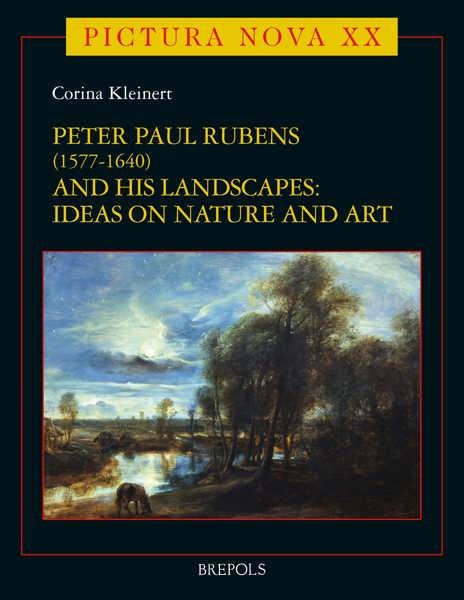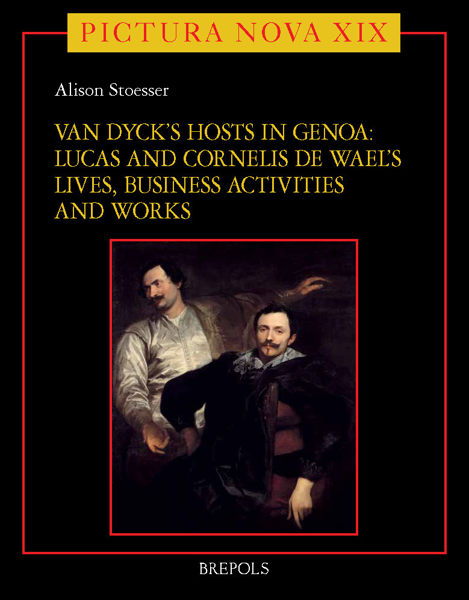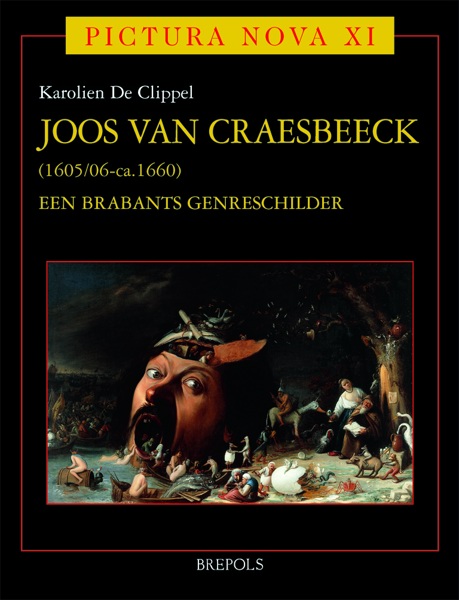
Van Dyck's Hosts in Genoa: Lucas and Cornelis de Wael's Lives, Business Activities and Works
Alison Stoesser
- Pages:2 vols, 1028 p.
- Size:190 x 250 mm
- Illustrations:683 b/w, 40 col.
- Language(s):English
- Publication Year:2018
- € 265,00 EXCL. VAT RETAIL PRICE
- ISBN: 978-2-503-53175-5
- Hardback
- Available
"(...) scholars will benefit from Stoesser’s exacting analysis of precisely how artists navigated the commercial and creative aspects of marketing their works to clients – especially in Genoa – during the first half of the seicento. Few other authors go to the effort of explaining the foundations of artistic practice on a commercial level, to outline the main tenets of the theoretical discourse that subsumed the creation of many of these works, or of reviewing arcane source material (the reader learns, for example, that it took over one hundred different motions to load a musket, information cited to substantiate the accuracy of details in Cornelis’s military works)." (Timothy Standring, in: The Burlington Magazine, 161, February 2019, p.171)
“It is a major contribution to understanding the visual and material cultures of Early Modern Europe. Not only historians of art, but economic and even social historians are going to find much food for thought in this tenacious investigation. It is, without question, one of the most distinguished contributions to the Pictura Nova series to date, a series that in recent years has published a number of books with limited commercial appeal but disproportionate impact for our knowledge of Northern European art.” (Alison Stoesser, in: Historians of Netherlandish Art Reviews, November 2019)
""Un trabajo de una gran seriedad y rigor dividido en dos volúmenes." (Diéguez Rodríguez, in: Philostrato, Revista de Historia y Arte, Núm. 6 (2019)
Long overshadowed by the brilliance of their close friend, Anthony van Dyck, Lucas and Cornelis de Wael, active as artists and dealers in Antwerp, Genoa and Rome, have largely been ignored in Flemish art historical literature. No monograph on them has appeared since 1925. This book aims to rectify this situation by giving a global overview of their wide-ranging pursuits. However, before assessing their personal histories it first examines the historical context, particularly with respect to the 17th-century art market in these three cities, with special attention given to its structure in Genoa, so far neglected in surveys of the Italian markets. A fresh appraisal of information from archival and other sources in each city has been undertaken to give a revealing up-to-date insight into their lives, trading activities in goods ranging from art works to second-hand clothing and hides, as well as their extensive network of friends and clients stretching from the Northern Netherlands to Sicily, including their close business association with the prominent Flemish art dealer Matthijs Musson and the Moretus family, owners of the Plantin-Moretus publishing house. Their own contribution to the art world is not neglected, with a full discussion of their works and an accompanying catalogue raisonné, which, in Cornelis de Wael’s case, includes his extensive oeuvre of paintings, drawings and prints. In addition, the De Wael brothers’ crucial function as hosts to Dutch and Flemish artists in both Genoa and Rome, with Van Dyck being the most famous, is also considered, while Cornelis de Wael’s not inconsiderable role in making Rembrandt’s prints known in both cities in his capacity as an art dealer is brought into focus. Despite the relative obscurity of his works till now, the sometimes unexpected influence of these on other artists from as far apart as the Northern Netherlands and Spain is also given careful attention.



